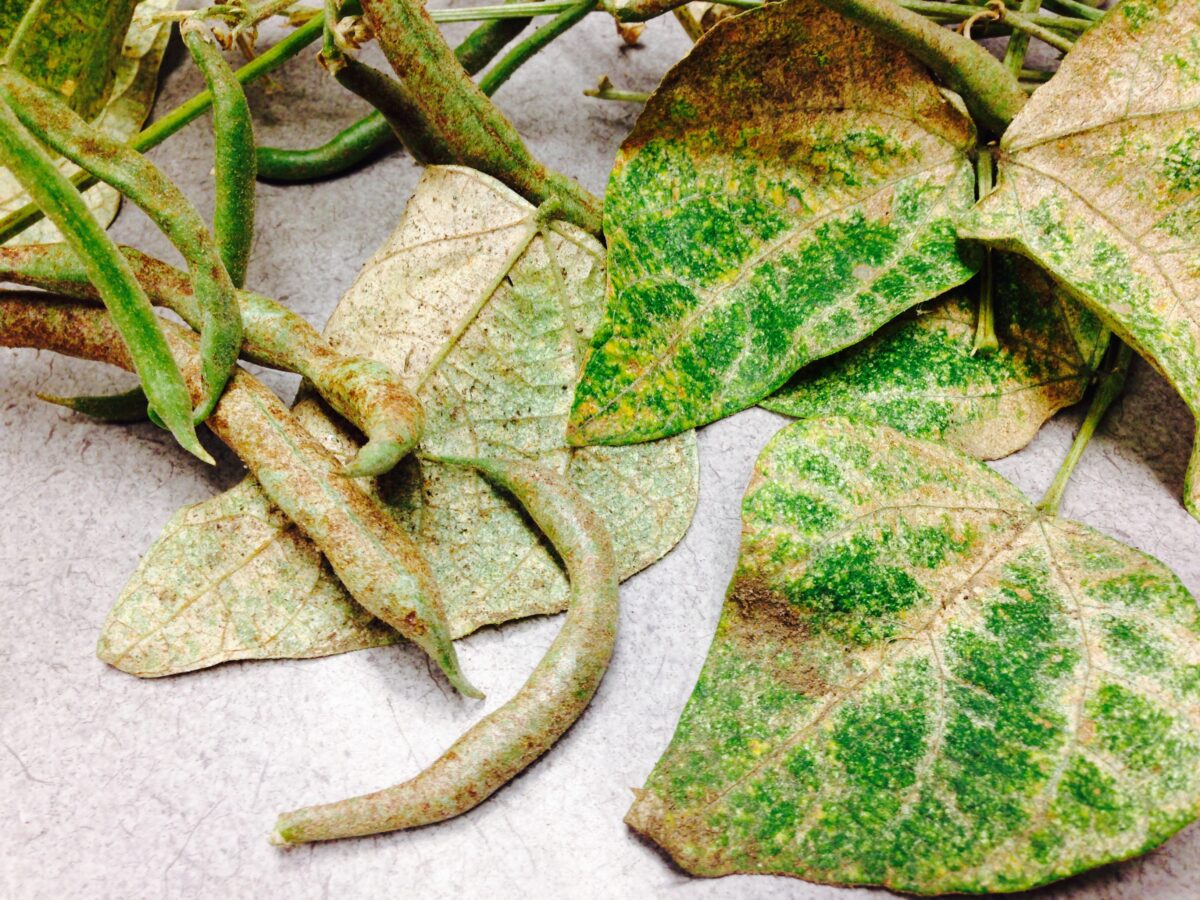Garden Help Desk: Identify and handle spider mites in your garden
- Spider mites are attracted to many different plants, both ornamental and edible. The heavy stippling on the leaves and the bleached, bronzy coloring on the beans are typical of a heavy infestation.
- Plants like this Dwarf Alberta spruce aren’t suited to our hot, dry summers. When they are placed in stressful settings like this, near an AC condenser and hot brick wall, they are easy targets for spider mites.
- This burning bush shows all the signs of a spider mite infestation- stippling and poor color on the leaves, crispy leaves and early leaf drop.
- You may find very fine webbing on plants with a heavy spider mite infestation. The dirty appearance of the underside of the leaves is another sign of spider mites.
I have two dwarf burning bushes on the south side of my house. One of them isn’t looking good and has lost a lot of leaves already. Any idea what might be affecting this? I can see some silky web material all over plant. Could this be spider mites?
This does look like spider mite damage, a pretty severe infestation. Spider mites are very tiny and can be hard to see, but it’s common to see their damage on a wide variety of plants from mid-summer through fall because this pest thrives in our hot, dry summer weather. Stippling on the leaves, poor color, a dirty appearance to the undersides of leaves, crispy leaves, fine webbing and early leaf drop are all signs of spider mite problems.
Stressed plants are more susceptible to spider mite damage, so good plant care is the most important part of managing the problem. Giving all your plants what they need, indoors and out in the landscape, reduces pest problems, including spider mite problems.
Avoid drought stress. Water your shrubs deeply about once every 5-7 days during the summer and less often in the spring and fall. Don’t water frequently, as that can also be stressful for plants. Keep a layer of mulch over the soil to conserve moisture and reduce swings between moist and dry soils between watering.
Keep the area around your shrubs free of weeds and grass. This will reduce habitat for the mites and reduce competition for the water and nutrients your plants need.
Don’t overfertilize. High nitrogen levels in your shrubs’ foliage can favor spider mite reproduction.
You can give your bushes some immediate relief now by hosing off the shrubs with strong sprays of water every morning for a few days. Focus your water spray on the underside of the leaves and the lower parts of the plants. Follow up the sprays with an evening application of insecticidal soap if you still aren’t getting good control. Any spray that has an oil or soap component can scorch plant leaves if temperatures are high while the spray wet. If you apply the soap in the evening when things have cooled off, the spray will have all night to dry before temperatures rise again the following day. Repeat the sprays as recommended on the product label.
Next spring when the buds are swelling, but before the leaves emerge, spray your shrubs with 2% horticultural oil to suffocate any overwintering mites or eggs. It won’t prevent mite problems completely but may help to reduce the problem. After leaf-out, check the shrubs frequently for signs of spider mites.
Avoid using miticides and broad-spectrum insecticides and in your home landscape whenever possible. Those products are harmful to the predatory mites and beneficial insects in your landscape that help to keep problems like spider mites under control.











